We need your consent to use the individual data so that you can see information about your interests, among other things. Click "OK" to give your consent.
ASTM D6112-13
Standard Test Methods for Compressive and Flexural Creep and Creep-Rupture of Plastic Lumber and Shapes
STANDARD published on 1.6.2013
The information about the standard:
Designation standards: ASTM D6112-13
Note: WITHDRAWN
Publication date standards: 1.6.2013
SKU: NS-33834
The number of pages: 21
Approximate weight : 63 g (0.14 lbs)
Country: American technical standard
Category: Technical standards ASTM
The category - similar standards:
Annotation of standard text ASTM D6112-13 :
Keywords:
creep, creep-rupture, plastic lumber, recycled plastic, ICS Number Code 83.140.01 (Rubber and plastic products in general)
Additional information
| Significance and Use | ||||||||||||||
|
5.1 Data from creep and creep-rupture tests are necessary to predict the creep modulus and strength of materials under long-term loads and to predict dimensional changes that have the potential to occur as a result of such loads. 5.2 Data from these test methods can be used to characterize plastic lumber: for comparison purposes, for the design of fabricated parts, to determine long-term performance under constant load, and under certain conditions, for specification purposes. 5.3 For many products, it is possible that there will be a specification that requires the use of this test method, but with some procedural modifications that take precedence when adhering to the specification. Therefore, it is advisable to refer to that product specification before using this test method. Table 1 in Classification D4000 lists the ASTM materials standards that currently exist. |
||||||||||||||
| 1. Scope | ||||||||||||||
|
1.1 These test methods cover the determination of the creep and creep-rupture properties of plastic lumber and shapes, when loaded in compression or flexure under specified environmental conditions. Test specimens in the “as-manufactured” form are employed. As such, these are test methods for evaluating the properties of plastic lumber or shapes as a product and not material property test methods. 1.2 Plastic lumber and plastic shapes are currently made predominantly with recycled plastics. However, this test method would also be applicable to similar manufactured plastic products made from virgin resins where the product is non-homogenous in the cross-section. 1.3 The values stated in inch-pound units are to be regarded as standard. The values given in parentheses are for information only. 1.4 This standard does not purport to address all of the safety concerns, if any, associated with its use. It is the responsibility of the user of this standard to establish appropriate safety and health practices and determine the applicability of regulatory limitations prior to use.
|
|
Standard Guide for Development of ASTM Standards Relating to Recycling and Use of Recycled Plastics (Withdrawn 2007)
|
|
Standard Test Methods for Physical Dimensions of Solid Plastics Specimens
|
|
Standard Practices for Force Calibration and Verification of Testing Machines
|
|
Standard Classification System for Specifying Plastic Materials
|
|
Standard Terminology Relating to Plastics
|
|
Standard Test Methods for Tensile, Compressive, and Flexural Creep and Creep-Rupture of Plastics
|
|
Standard Practices for Evaluating the Resistance of Plastics to Chemical Reagents |
Similar standards:
Historical
1.5.2012
Historical
1.6.2013
Historical
1.6.2013
Historical
1.4.2010
Historical
1.9.2013
Historical
1.6.2013
We recommend:
Technical standards updating
Do you want to make sure you use only the valid technical standards?
We can offer you a solution which will provide you a monthly overview concerning the updating of standards which you use.
Would you like to know more? Look at this page.


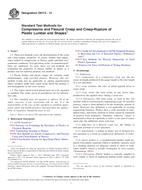
 ASTM D6105-04(2012)..
ASTM D6105-04(2012)..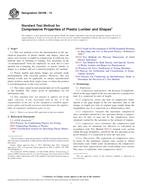 ASTM D6108-13
ASTM D6108-13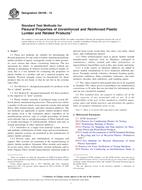 ASTM D6109-13
ASTM D6109-13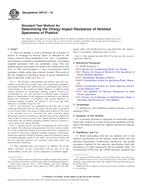 ASTM D6110-10
ASTM D6110-10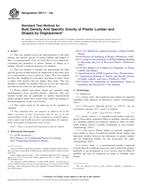 ASTM D6111-13a
ASTM D6111-13a ASTM D6117-13e1
ASTM D6117-13e1
 Cookies
Cookies
